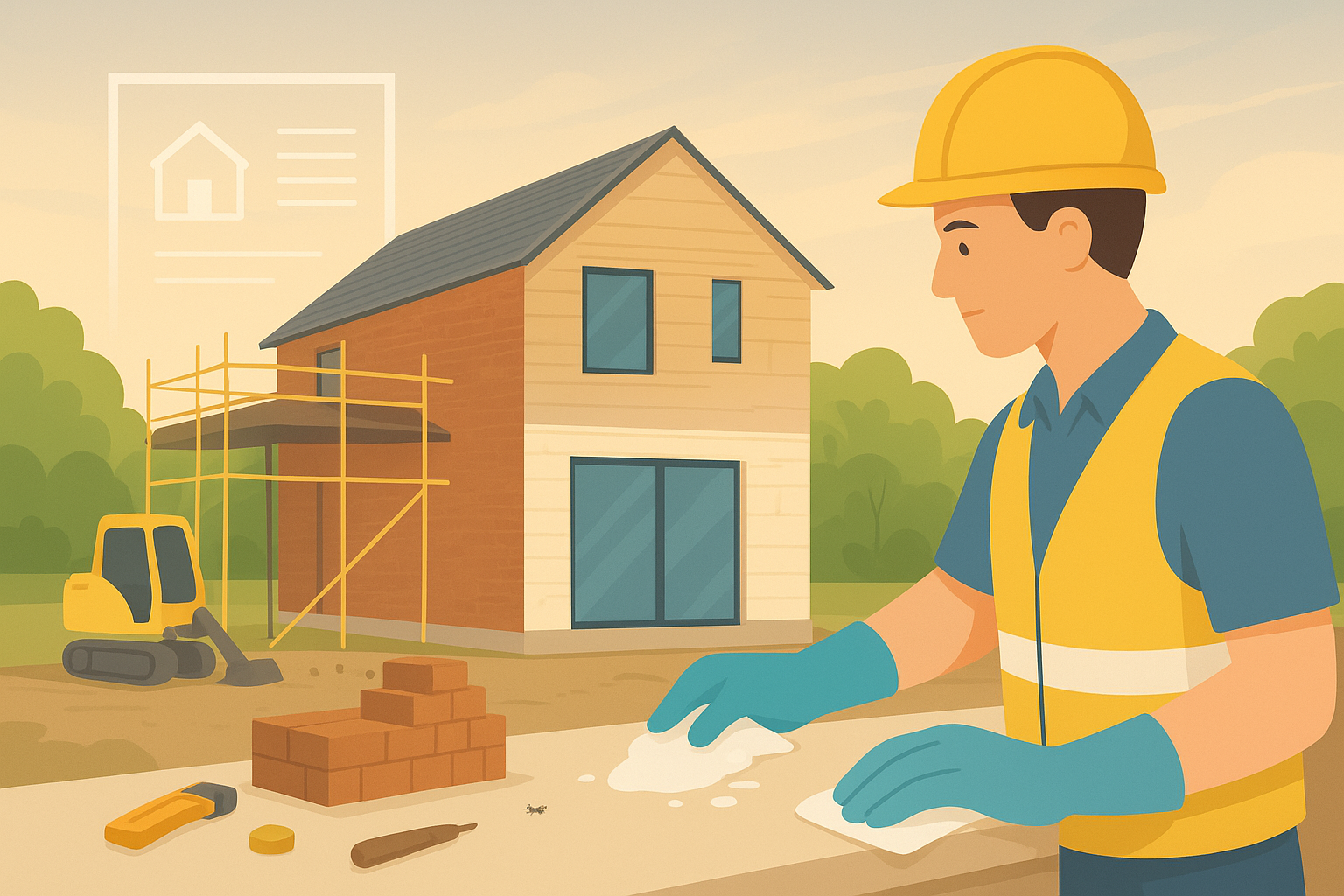Introduction
If you’ve ever dreamed of building your own home, you’re not alone. Across the UK, more people are turning to self-build projects as a way to design homes that fit their lifestyle, budget, and sustainability goals. But the biggest question remains: how much does it cost to build a house in the UK?
The short answer — as of 2025, building a house in the UK typically costs between £1,800 and £3,000 per square metre, depending on design, location, and materials. But that’s just the start. From planning permission and land purchase to interior finishes, the total budget can vary widely. This guide breaks down everything you need to know about UK home-building costs — transparently and realistically.
Average Cost to Build a House in the UK (2025 Update)
The average cost to build a house in the UK depends on several factors: region, house size, design complexity, and material quality. Here’s a general estimate:
| Build Type | Average Cost (per m²) | Estimated Total (100m² Home) |
|---|---|---|
| Basic Finish | £1,800–£2,200 | £180,000–£220,000 |
| Mid-Range Finish | £2,200–£2,800 | £220,000–£280,000 |
| High-End Finish | £2,800–£3,500+ | £280,000–£350,000+ |
These figures don’t include land costs, professional fees, or VAT, which can add another 25–35% to your total project.
Cost Breakdown — Where the Money Goes
Understanding each part of your budget helps avoid unpleasant surprises later. Let’s look at the typical cost distribution for building a home in the UK:
- Land Purchase (£100,000–£300,000+)
Land price varies drastically between regions. Expect to pay more in southern England or near major cities, while rural areas of Scotland or Wales remain more affordable. - Design and Planning (£10,000–£25,000)
Includes architect fees, structural engineering, and planning permission. A detailed design can save money during construction by reducing on-site adjustments. - Foundations and Structure (25–30% of total cost)
Excavation, concrete, and framing typically take up the largest portion of your build. Material costs have increased in recent years due to inflation and supply shortages. - Labour and Trades (20–30%)
Skilled workers such as electricians, plumbers, roofers, and builders are essential — and their rates depend heavily on region and demand. - Finishes and Interiors (15–25%)
The final touches — flooring, kitchen fittings, bathrooms, lighting, and paint — often determine whether your build stays within budget or goes over. - Additional and Hidden Costs (10–15%)
Planning applications, utility connections, landscaping, and VAT can add thousands to your overall cost. Always include a 10% contingency fund.
Regional Cost Differences Across the UK
Not all builds are priced equally across the country. Labour rates, land values, and material costs vary regionally.
- London & South East: £2,500–£3,500 per m² — high land prices and premium trades.
- Midlands & North England: £1,800–£2,600 per m² — moderate building costs.
- Scotland, Wales, Northern Ireland: £1,500–£2,300 per m² — lower average labour and land costs.
For example, a modern three-bedroom home in Manchester might cost around £240,000, while the same property in Surrey could exceed £380,000.
If you’re planning multi-storey construction, it’s worth exploring the differences outlined in How Much Does It Cost to Build a 2-Story House — since upper floors can be more cost-efficient than expanding horizontally.
How to Reduce Building Costs (Without Sacrificing Quality)
Building a home doesn’t always mean overspending. Smart planning and efficient choices can help you stay within budget while maintaining quality.
- Use Modular or Prefabricated Designs: Prefab homes can reduce both material waste and construction time.
- Choose Local Materials: Sourcing stone, timber, or brick locally can cut transport costs and carbon emissions.
- Simplify the Layout: Complex rooflines and irregular shapes are more expensive. A simple rectangular design is cheaper to build.
- Plan for Energy Efficiency: Investing in insulation and solar panels can save thousands long-term.
- Hire the Right Team: Experienced builders can prevent costly mistakes and ensure your project meets UK regulations.
Many homeowners also draw inspiration from rural farmhouse plans — simple, functional layouts that combine charm with budget-friendly practicality.
Additional Expenses to Consider
While most focus on the main construction cost, several “hidden” expenses are easy to overlook:
- Planning Permission: £400–£700 (application and council fees)
- Surveys & Inspections: £500–£2,000 depending on site complexity
- Utilities & Services: £3,000–£10,000 to connect water, gas, and electricity
- Landscaping: £2,000–£5,000 depending on plot size
- Legal & Stamp Duty Fees: Variable depending on property value
Even small oversights — such as site access or drainage requirements — can lead to unexpected expenses, so always factor in a safety margin.
New Build vs Buying an Existing Property
In many parts of the UK, building your own home is not always cheaper than buying one. However, it often offers better long-term value.
| Aspect | Building a Home | Buying Existing Home |
|---|---|---|
| Customization | ✅ Full Control | ❌ Limited |
| Energy Efficiency | ✅ Modern standards | ❌ Often outdated |
| Initial Cost | 💰 Higher | 💰 Lower |
| Maintenance | ✅ Low (new systems) | ❌ May need upgrades |
| Long-Term Value | ✅ Higher resale potential | ❌ Depends on market |
Building allows you to design an eco-friendly, future-ready property that suits your lifestyle — but it requires patience, proper budgeting, and professional guidance.
Is It Worth Building a House in the UK in 2025?
Despite rising costs, many still find self-building rewarding. You get to design your ideal home, integrate sustainability, and often end up with a property worth more than you invested.
That said, planning ahead is essential. Consult local councils for planning permissions, use professional cost estimators, and compare quotes before starting. A well-planned build in 2025 could not only save money but also future-proof your home for energy regulations and smart living technology.
Conclusion
So, how much does it cost to build a house in the UK? In 2025, you’re looking at £250,000 to £500,000 on average, depending on design, materials, and region. While the upfront investment can be significant, the long-term rewards — custom design, modern efficiency, and increased property value — make it worthwhile.
Whether you’re building a countryside retreat or an urban townhouse, careful planning, local expertise, and sustainable choices will shape your project’s success. The key is balancing ambition with realistic budgeting — because every dream home begins with a solid financial foundation.











